Falconry
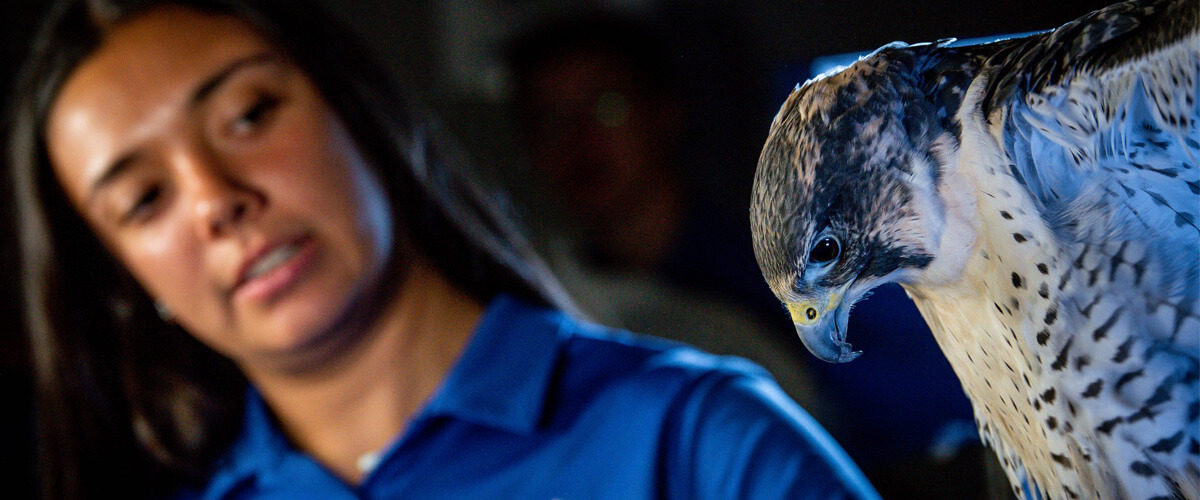
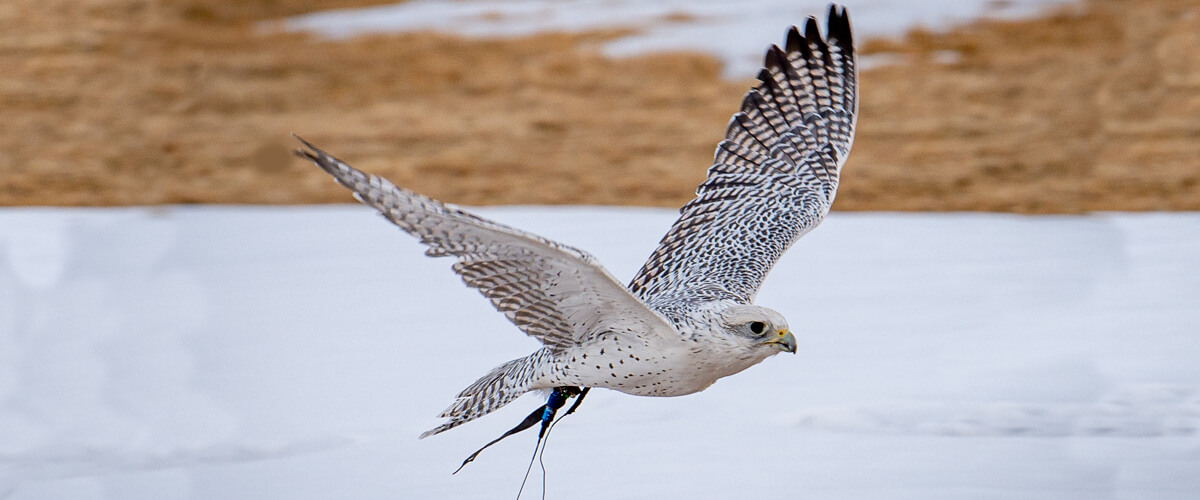
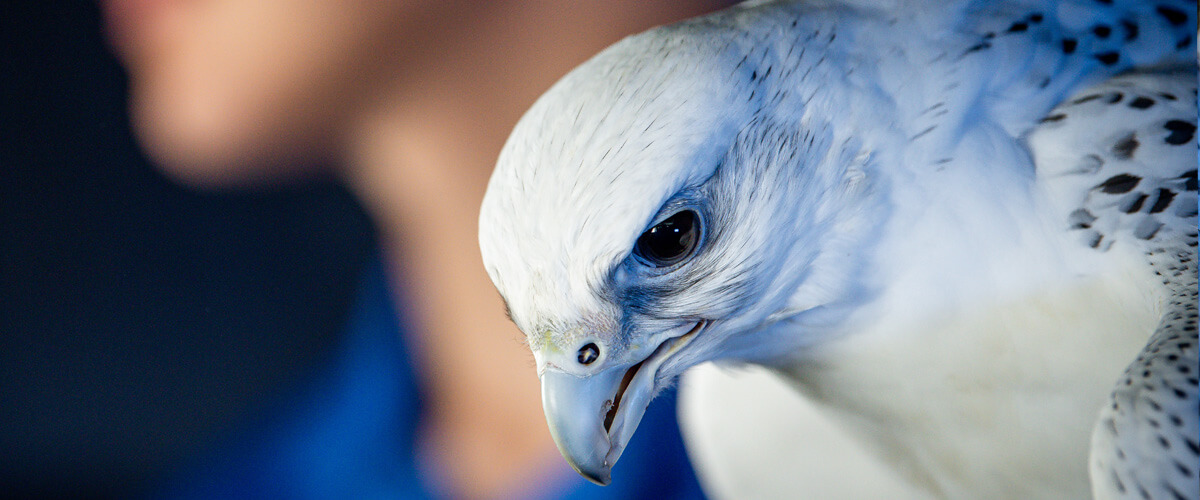
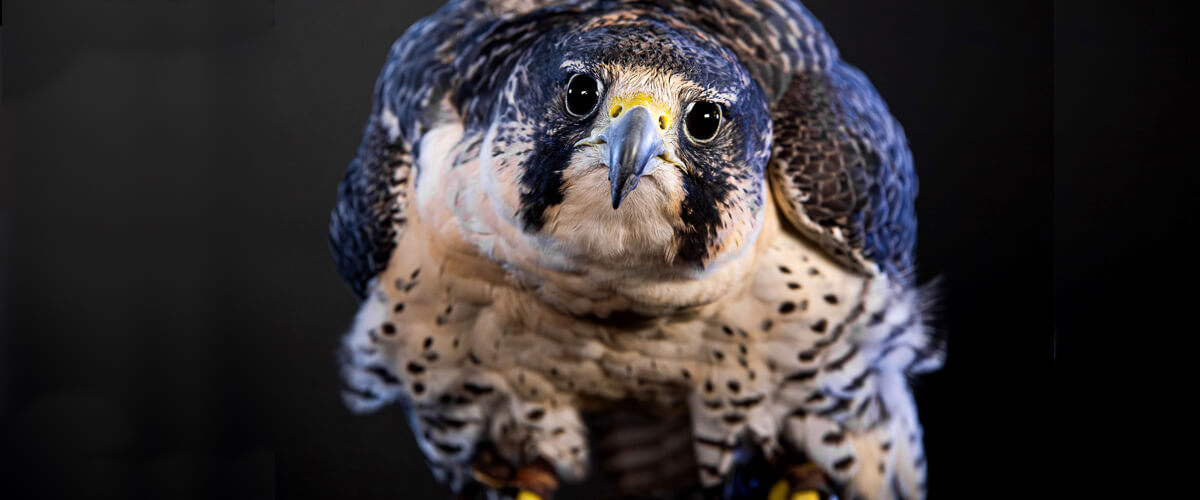
Experts once said falcons could not be trained to perform before huge crowds because they would panic and flee. Since 1956, cadets have shown and flown these majestic birds before thousands of cheering spectators. Audiences across the country have been intrigued and delighted by the aerobatics of the falcon, flying mascot of the U.S. Air Force Academy. Trained and handled by cadet falconers, the birds soar and dive, sometimes zooming low over the heads of captivated spectators.
While their public performances are limited to outdoor venues, such as football games and cadet wing parades, the falcons appear at many other athletic contests and civic events. Cadet falconers currently use Gyr-Saker and Gyr-Peregrine falcon hybrids in flying demonstrations, although they have also historically used Prairie falcons. Hybrids are used because they combine size and flying ability. The birds are flown throughout the year, weather permitting, to keep them in top condition.
Falconry is a fantastic and rewarding extracurricular activity offered to cadets. There are usually 12 falconers, with four chosen from each new class at the end of the year to replace graduating seniors. The new falconers begin training in February under the leadership of experienced upperclassmen, the officer-in-charge and a Master Falconer. It is vital that novices receive proper instruction in order to successfully train and safely maintain the physical health of the birds. Falconers’ duties include daily checks of each bird’s health and condition, training sessions during which the birds are fed a measured ration of meat, frequent cleaning of the mews and routine maintenance of equipment.
Star Performers
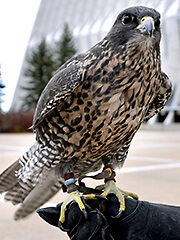
Ace
Gyr-Saker hybrid
Born: 2006
This hybrid falcon performs at halftime of our home football games. Ace is a nickname short for his full name, Achilles, but fits with the U.S. Air Force Academy’s flying culture. Ace is notorious for his love of flight, always eager to fly off the glove and play in the wind. His flying pattern is characterized by sharp turns, climbing high so that he can dive with fantastic speed. Falcons prey on other birds, making them experts at air-to-air combat. We affectionately call them nature’s fighter pilots, making them a fitting mascot for the Academy.
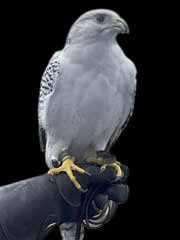
Athena
White-phased gyrfalcon
Born: 2010
Athena is the daughter of Aurora, the Academy’s previous official mascot. Several years ago, Athena had a mishap when her talons got stuck in her nostrils, causing the top of her beak to grow in three separate parts instead of one. This does not hurt or hinder her in any way but does make her look more intimidating!
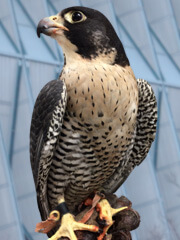
Cairo
Anatum peregrine falcon
Born: 2008
Cairo was acquired in the spring of 2018 and previously belonged to a civilian falconer who hunted with her. Unfortunately, Cairo developed a heart condition and is no longer able to stand the stress of flying. Despite her condition, Cairo’s sweet disposition has helped her transition into a new role as an excellent presentation bird, vital in educating the public about her species and the Academy’s program.
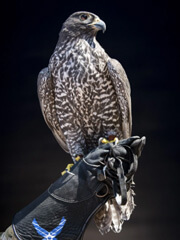
Eclipse
Dark-phased gyrfalcon
Born: 2005
Eclipse is the program’s oldest falcon mascot. Eclipse was transferred to the Academy from the raptor program at the Royal Gorge in Cañon City, Colorado. Eclipse does not fulfill any flying demonstration role for the cadet falconry team but instead represents the Academy as an ambassador for the institution and for awareness for birds of prey.
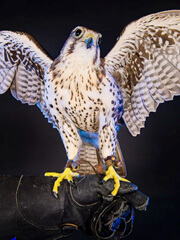
Kara
Prairie gyrfalcon
Born: 2017
Kara came to the Air Force when she was young. She has a medical condition known as stargazing syndrome, where she tends to tilt her head back and look upward or at odd angles. The cause of Kara’s condition is not known, but it hinders her ability to fly. Kara is one of the gentlest falcons in the mews, and she is a great ambassador for her species and the Academy.
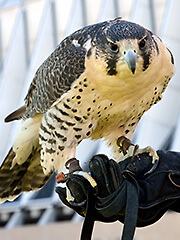
Karena
Gry-Peregrine falcon
Born: 2014
Karena is another one of the Academy’s performing mascots that you can witness during halftime at home football games. She was hatched at the Academy in 2014, only days before graduation as the Air Force Thunderbirds practiced overhead. Karena is a Gyr-Peregrine hybrid who is known for her aggressive personality. This hybrid of falcon species combines the gyrfalcon’s large size with the speed of the peregrine. Gyrfalcons primarily hunt other birds but will occasionally take mammals if the need arises. Comparatively, peregrine falcons exclusively hunt medium-sized birds like pigeons.
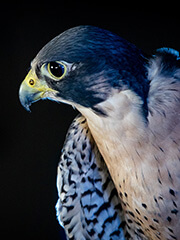
Kuzco
Anatum peregrine falcon
Born: 2021
Kuzco is an anatum peregrine falcon that was transferred to the Academy after suffering an injured wing. He has since recovered, and the cadet falconry team works with him to build up his flying muscles. Peregrine falcons are native to every continent except for Antarctica, and there are 19 accepted subspecies across the world. The Anatum peregrine is one of three sub-species native to North America.
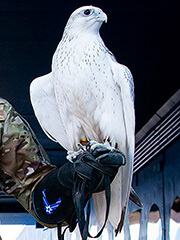
Nova
White-phased gyrfalcon
Born: 2020
Nova is the official mascot of the Academy and the successor to the previous official mascot Aurora. Nova is a white-phase gyrfalcon, which is the largest of the falcon species. Females are, in fact, one-third larger than males, so she could be one of the largest falcons you will ever see. We look forward to seeing her show her abilities in the coming years.
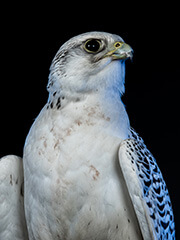
Odin
White-phased gyrfalcon
Born: 2010
Odin has a genetic lineage to a noble bloodline of gyrfalcons in Norway. The cadet falconry team is training him to be the newest flying demonstration falcon mascot. Odin is a very curious bird, constantly taking in his surroundings and itching to stretch his wings and explore whenever he can.
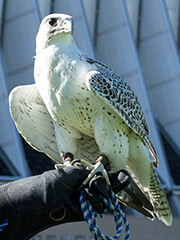
Ziva
Gry-Saker falcon
Born: 2014
Ziva came to the Academy in 2014 when she was a few weeks old. She is now a trained flying performer and takes to the air for falconry demonstrations at halftime of Academy home football games. Ziva is a Gyr-Saker hybrid falcon, known for her free spirit and friendly demeanor. The blend of these species combines the size and power of the gyrfalcon with the tenacity of the saker falcon. Gyrfalcons can be found in Alaska, Canada, and the extreme north continental United States, while sakers are Middle Eastern birds known for their trainability. With this combination, Ziva has intimidating size and an equally impressive flying technique!
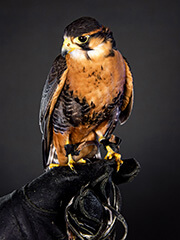
Zorro
Aplomado falcon
Born: 201
Zorro is currently the program’s smallest falcon. His species is mostly native to Central and South America, with some natural habitat in New Mexico and Texas. Zorro does not fill any flying demonstration role due to his smaller size, but he does help to educate the public about the Academy.
Retired Falcons
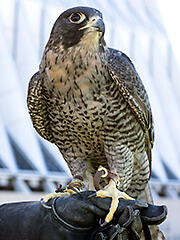
Apollo
Apollo was one of the Academy’s performing mascots. He was a Gyr-Peregrine hybrid and known for diving to brush his wingtips on the grass when flying. Apollo has been flying at football games longer than any of our other birds. He was one of the few falcons that we asked people not to pet because he would bite and could be extraordinarily stubborn. Apollo’s attitude was endearing to his handlers, though we encouraged everyone to admire him from a distance.
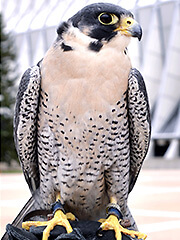
Oblio
Tundra peregrine falcon
Oblio was a tundra peregrine falcon used for presentations. He came to us at seven years after a civilian falconer could no longer hunt with him. Oblio contracted a disease that eroded his nose cones, which are an anatomical feature within the falcon’s nostril that brings air into the lungs while flying at high speeds. These are a vital adaptation as peregrines are the fastest animal in the world, able to reach a recorded 250 mph in a downward dive. Without these nose cones, Oblio was not able to safely fly. Instead, he served as an excellent ambassador for his species by educating the public about falcons and the Academy.
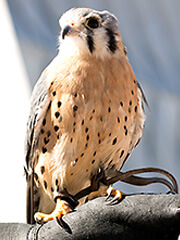
Zeus
American kestrel falcon
Zeus was an American kestrel, the smallest species of falcon indigenous to North America. He was used solely for presentations and did not perform at Academy football games because of his small size and stature. While he wasn’t quite large or strong enough to put on a show in the stadium, Zeus helped educate the public about the Academy’s mission.